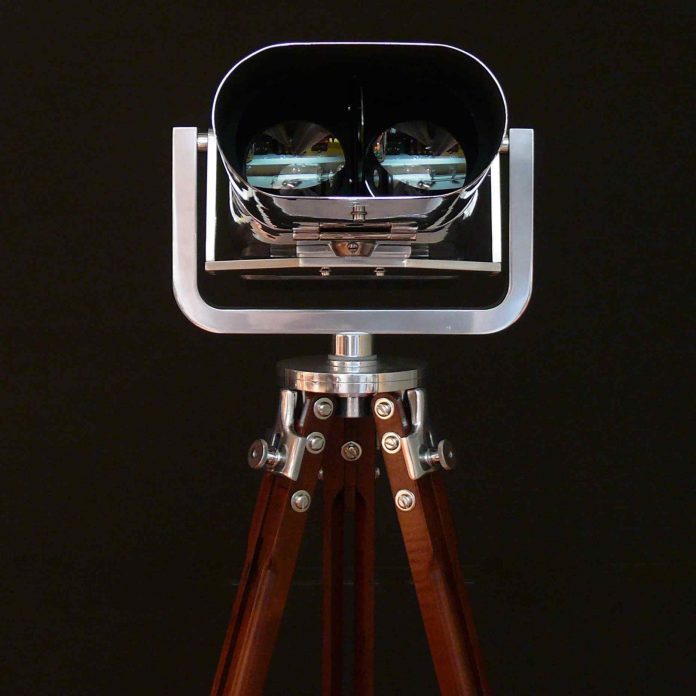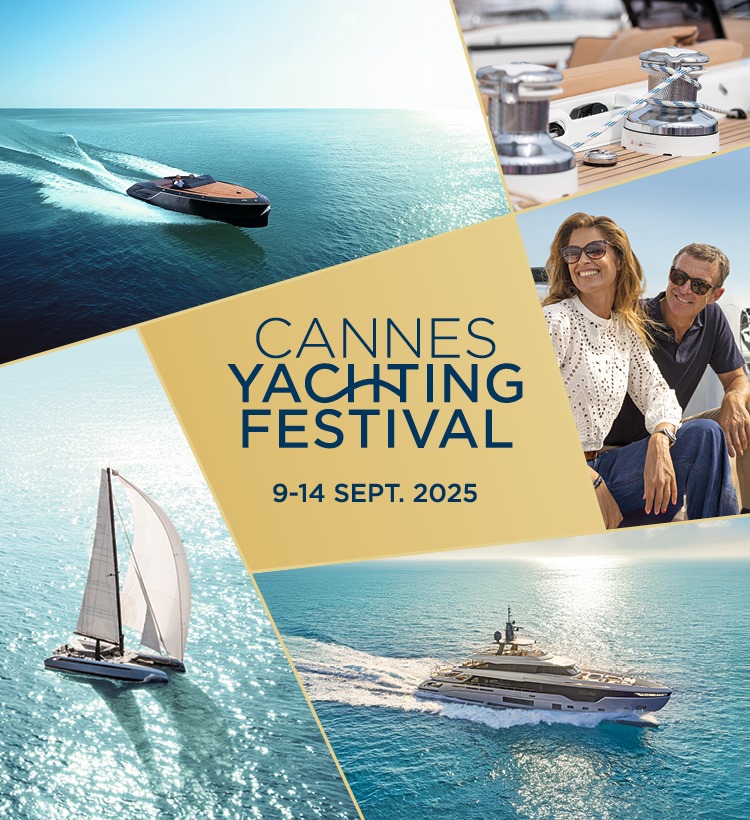In 1893, the physicist Dr Ernst Abbe, a pioneer in the field of optics and a business partner of the German microscope manufacturer Carl Zeiss, patented an 8x20mm “binocular telescope”. This was not the first attempt to create a pair of binoculars, but it was the most technically successful. By the first world war, Zeiss had developed some 59 models of hand‑held binoculars for consumer and military use. Alongside their practical importance, the inventions quickly came to be considered luxury items. (Even in the “a good pair would cost $3,000”, says London dealer Allan Hatchwell.) Furthermore, over the past 15 years, a new market has opened up in large antique military-field or naval binoculars (with magnifications and lens diameters of up to 25x150mm) as interiors connoisseurs have come to appreciate their streamlined, sculptural forms.
At up to 7ft in length (but more usually 2-3ft), these huge instruments look magnificent when polished and mounted on wooden or metal tripods and provide impressive optics – superb for scanning Scottish hillsides or scrutinising the shipping traffic from a beach-front house. And they quickly become treasured heirlooms. Antiques dealer Drew Pritchard, who is based in Colwyn Bay, Wales, and has a magnificent pair of English “donkey-eared” binoculars (£4,500) for sale, says: “Naval binoculars rarely ever go down in price as people tend to keep them.” He adds: “They regularly fetch between £5,000 and £10,000, but larger and rarer examples in perfect condition can go for considerably more.”

While it is possible to find very early models, most of the desirable ones still available were manufactured during the second world war in Japan, Germany, Russia, the UK and the US by companies such as Emil Busch, E Leitz, Schneider, Goerz, Nikko, Toko, Kawa, Fuji, Ross, Bausch & Lomb and Huet. Most dealers, however, agree that the Zeiss models are the finest, although the best Japanese examples such as Nikko and Yashima, which are constructed with German optical glass, run a close second.
“In the late 1980s, a couple of London dealers, Arthur Middleton in the West End and Brian Neal in Portobello Antiques Market, started polishing and mounting binoculars on tripods and selling them to dealers from the US,” says Bassam Moujaes of London’s Sisters Antiques, which has a pair of second world war Japanese battleship binoculars by Yashima (£5,000). Ten years later, the fashion began to catch on in the UK. Allan Hatchwell of Hatchwell Antiques, which specialises in nautical and aeronautical objects and has a pair of c1940 Nikko battleship binoculars (£12,000), says: “We were first drawn to the aesthetics – they are very beautiful objects. And they are much nicer to use than a telescope as you don’t have to squint.” Since then, however, dealers and buyers have developed more technical “The history of optics when you get into it is quite fascinating,” adds Hatchwell.
As fellow London dealer Tim Bent of Bentleys puts it: “They’re the perfect boy’s toy or ‘mantique’. Most are destined for loft apartments, ski chalets and lakeside villas.” It is these different locations that dictate which models are most sought after, he says. “If you have a long-range view from a chalet, for instance, then a pair of 20x120s are best. But with a townhouse, 10x80s will give a perfectly magnified view and enable you to focus from 10m upwards.” These specifications tend to dominate, although Bent currently has some French 12×60 binoculars (£11,500) dating from the 1940s.
Newspaper proprietor Peter Fowler has several pairs that he acquired from Manfred Schotten Antiques in Burford, Oxfordshire. “I have some ex-military, German 10x80s from the 1950s, which I bought for around £4,000. I keep them in my house in Scotland for watching deer on the moors,” he says. “Then there’s the Nippon 15×80 from the 1940s that cost £11,000 – they’re in Cornwall and are great for looking out to sea.” He calls Manfred Schotten Antiques “an Aladdin’s cave”. It regularly stocks 10x80mm Polish and German binoculars and the Zeiss periscope (all £3,500- £4,300, depending on their tripods and condition).

Alongside large binoculars that have been polished to a shine, unrestored pairs can also be bought, often at auction, still bearing their original camouflaging black paint. “These might fetch up to £6,000,” says Lionel Willis, a specialist in maritime scientific instruments at Bonhams, which often includes large naval binoculars in its marine sales. In his view, “polishing destroys the integrity of the instrument”. Clients who snap up unrestored models are mostly aficionados who are attached to their history and performance. These pieces usually come without tripods – either because they were intended for use on a ship’s bridge or because the tripod is missing.
Willis concedes that it is often the restored pairs sold by dealers that fetch higher prices and, as Bent remarks: “It is becoming particularly difficult to find original, unrestored examples in perfect condition.” Bentleys has its binoculars restored by a retired naval commander who lightly gold-plates the brass and nickel-plates the steel to prevent corrosion. Bentleys also provides hardwood tripods if the originals are missing and is currently offering a pair of 1940s Nikko 20x120s (£25,500), fully restored with a tripod.
The Americans have certainly not lost their enthusiasm for such items either. Bradbury Ketelhut of Alpen Art & Antiques in Vail, Colorado, has a selection costing from $10,000 to $80,000. “We have had steady sales in the past few months for pairs in the $25,000 to $35,000 range,” he says, and attributes the increase in price over the past six months to a lack of supply combined with a growing demand. He has an outstanding pair of second world war 20×120 Toko naval binoculars ($32,000), originally used on either a carrier or destroyer.
One of Ketelhut’s clients is Mike Rushmore, an engineer and technology entrepreneur, who likes to watch wildlife from his home in the mountains of the western US. He neatly focuses on the appeal of these statuesque binoculars: “The elegant design leaps out at you when you first see them, but it is the awesome functional value of the optics that keeps your attention over time.”






